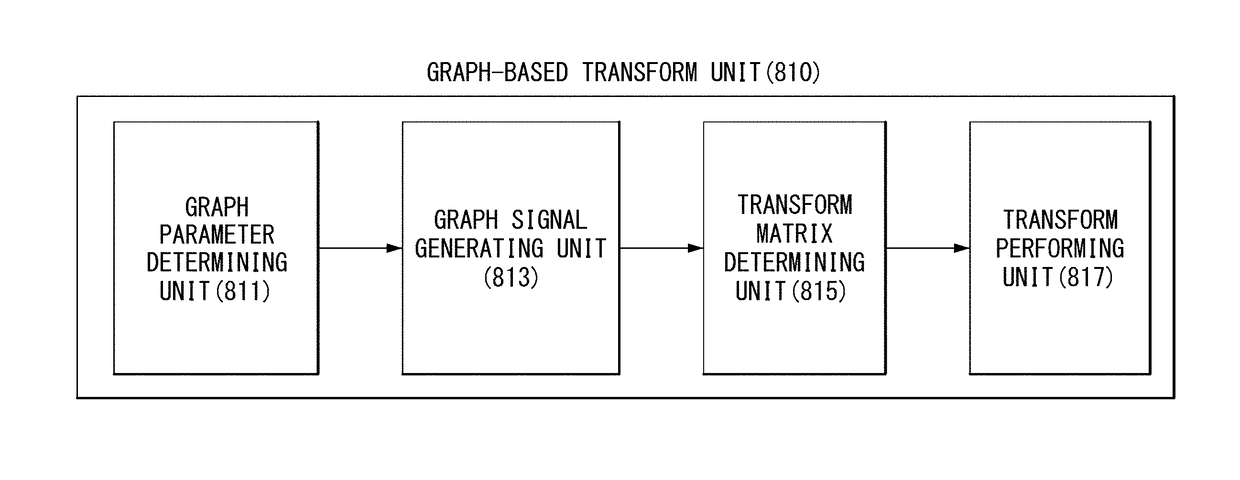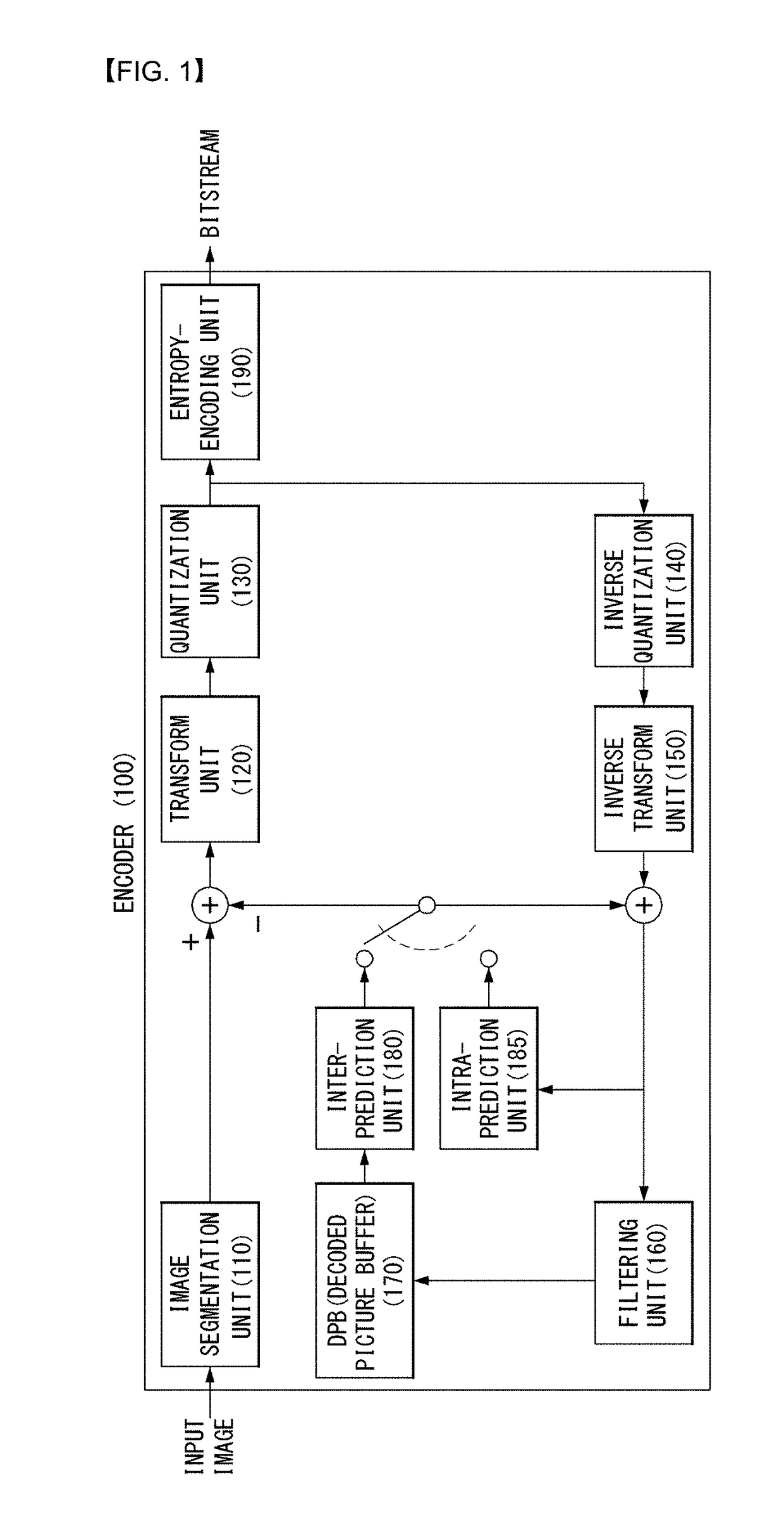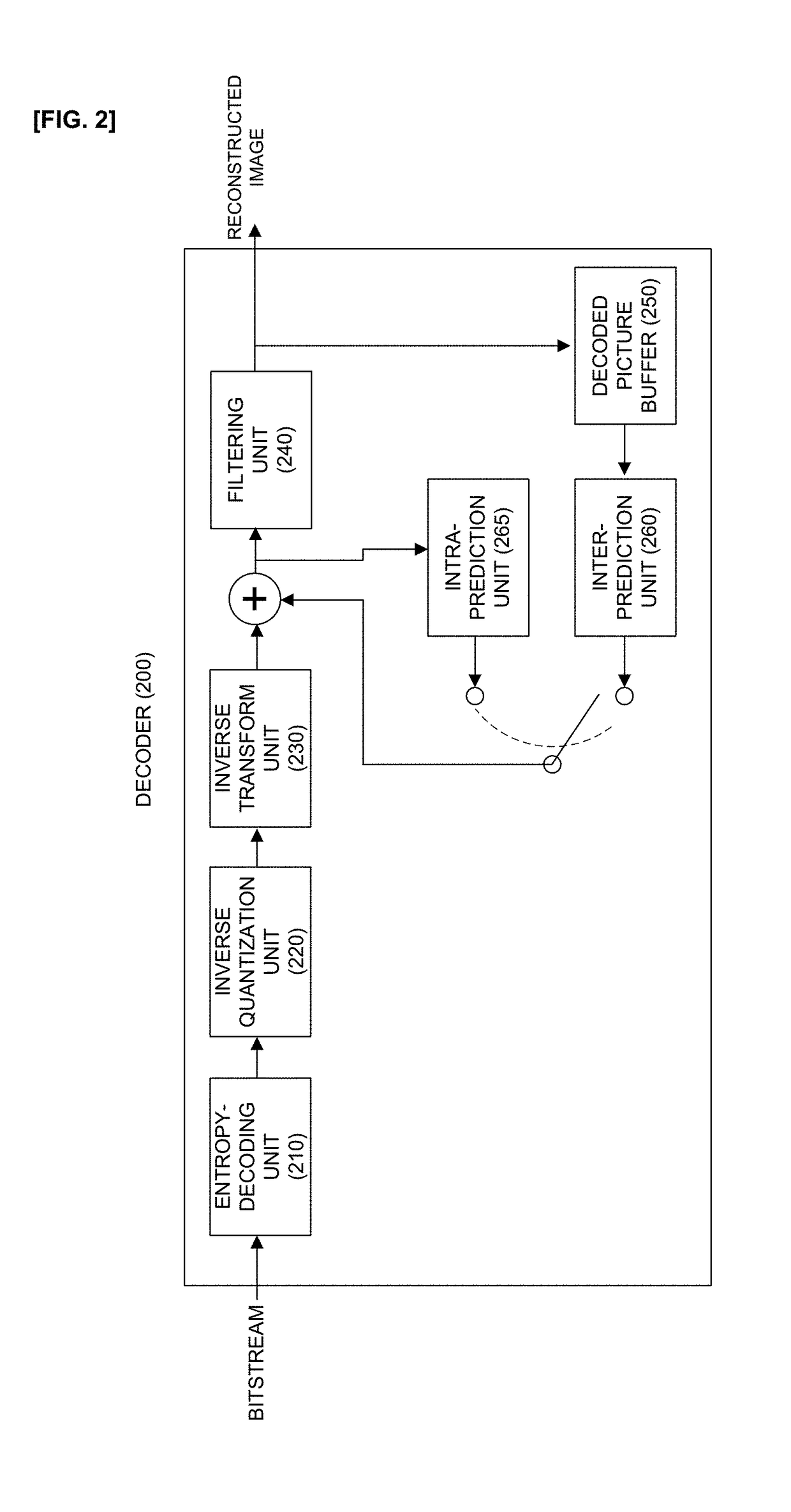Method and device for processing a video signal by using an adaptive separable graph-based transform
a video signal and separable graph technology, applied in the field of graph-based transform encoding and decoding methods, can solve the problems of very different statistical properties of residual blocks, and achieve the effects of low calculation complexity, rapid adaptation, and sufficient diversity of transforms
- Summary
- Abstract
- Description
- Claims
- Application Information
AI Technical Summary
Benefits of technology
Problems solved by technology
Method used
Image
Examples
first embodiment
[0121]In a first embodiment, correlation regarding one pixel pair is so small that a weight value of a corresponding edge may be set to be small. For example, a pixel pair including a block boundary may have relatively small correlation, so a small edge weight may be set for a graph edge including a block boundary.
second embodiment
[0122]In a second embodiment, a self-loop may be present or not at both ends, or self-loop may be present only at one end. For example, FIGS. 6(a) and 6(b) illustrates the case where the self-loop is present only at one of both ends, FIG. 6(c) illustrates the case where the self-loop is present at both ends of the graph, and FIG. 6(d) illustrates the case where the self-loop is not present at both ends of the graph. Here, the self-loop, representing dependency with an adjacent vertex, may refer to self-weight, for example. That is, a weight may be further given to a portion where the self-loop is present.
[0123]In another embodiment of the present invention, an extra 1D separable transform set may be defined according to TU sizes. In the case of non-separable transform, transform coefficient data is increased to O(N4) as a TU size is increased, but in the case of the separable transform, the transform coefficient data is increased to O(N2). Thus, the following configuration may be fo...
PUM
 Login to View More
Login to View More Abstract
Description
Claims
Application Information
 Login to View More
Login to View More - R&D
- Intellectual Property
- Life Sciences
- Materials
- Tech Scout
- Unparalleled Data Quality
- Higher Quality Content
- 60% Fewer Hallucinations
Browse by: Latest US Patents, China's latest patents, Technical Efficacy Thesaurus, Application Domain, Technology Topic, Popular Technical Reports.
© 2025 PatSnap. All rights reserved.Legal|Privacy policy|Modern Slavery Act Transparency Statement|Sitemap|About US| Contact US: help@patsnap.com



